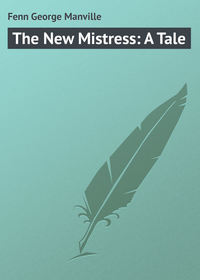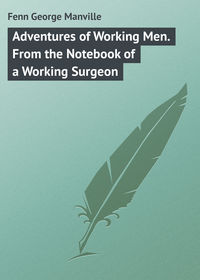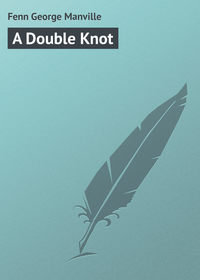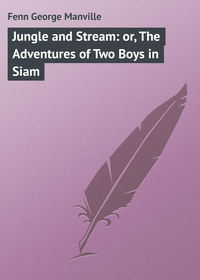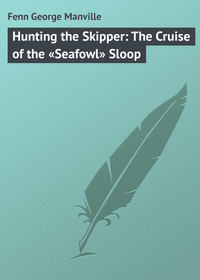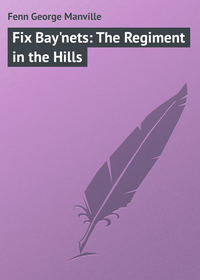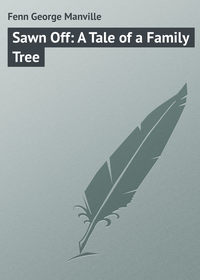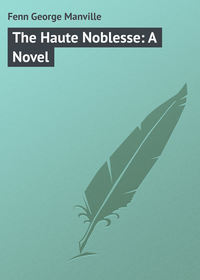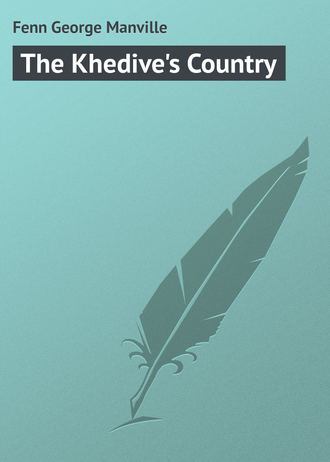 полная версия
полная версияThe Khedive's Country
Unlike the British farmer, the agriculturist in Egypt has at hand an abundant supply of labour. Housed in the mud huts or sun-dried brick houses adjoining the estates, the labourer is at all hours ready to respond to the demand. He receives one or two acres of land let at a reduced rental; he is a day labourer only, and can absent himself at pleasure to attend to his craft. His wage varies from sixpence to tenpence per day of ten hours in summer and eight hours in winter. He provides his own food.
In disposition this peasant is contented, good-natured, not resentful, and of good physique. He is also very untruthful, unreliable at his work, lazy, cunning, and unconscionable as to the quality and quantity of the task he is put to – in short, a thorough eye-servant. He requires constant supervision, when he will do good work under a trying sun. He promises fair, but performs badly. If he commits a fault and is questioned as to how it happened, one can invariably depend upon his telling an untruth. When working on his own plot he is most diligent, but his methods are not always the best, and he does not get the full benefit from the soil, owing to want of intelligence as to the rules of good husbandry. On a large estate, should extra hands be wanted for a special occasion, a hundred to two hundred men can be had on one night’s notice being given – a delightful state of affairs in cases of emergency, though here the farmer does not often suffer from his hay or corn crops being unharvested through the redundance of rain.
A large percentage of the fellaheen are perfectly illiterate, which accounts for their want of readiness to take up the initiative. They have no thirst for knowledge and love in agricultural matters to keep running in the old rut. Exactness, tidiness, and pride in his work are qualities very rarely found in a fellah. Slovenliness in the performance of duties is characteristic of the paid day labourer, and to a lesser degree when working on his own account. In Britain, for instance, where do we find the breeder of stock who excels his neighbours except in the shrewd farmer who, at great trouble and study, and by patient experimenting, attains to success? Not only so, but he is like the leaven which leaveneth the whole lump by raising the standard of a district. The apathy of the fellah is shown in the lack of breeding in horses, cattle, and sheep in Egypt, which is due to want of selecting suitable sires, care in rearing, and the like.
The soil responds to thorough tillage in a marked degree, but too little care is bestowed upon this question of cultivation, as the fellah is prone to scamp his work and leave part of his land solid – that is, not thoroughly stirred. When exposed to the sun the soil cracks and opens into fissures, sometimes as wide as five inches. The fellah is often, too, careless in providing a good bed for the seed, and irregular germination is the result. If the land is judiciously watered and timeously ploughed in a friable condition, it can be brought to a fine tilth without much extra trouble. As it is all soil – nothing in the shape of a bad subsoil exists, as in some parts of Great Britain – deep cultivation is thoroughly beneficial, bringing, as it does, unexhausted soil to the top. Generally in the preparation of the land for the cotton crop, with its deep-searching roots, a depth of twelve inches is attained.
Doubtless much of the apathy of the labouring man amongst the fellaheen is due, as in the case of the rice-feeding Hindoo, to his being to so great an extent a vegetarian. With him the staff of life consists principally of an exceedingly hard kind of bread, baked almost to biscuit, and composed of maize, or dourra, the small-grained millet; and the result of the fellaheen housewife’s efforts in this kind of food preparation necessitates dipping or soaking in water before the bread can be partaken of at a meal.
But in such a splendid garden land as Egypt, where cultivated produce attains maturity at so rapid a rate, and where with careful management and such a spring and summer-like climate two or even three crops of vegetables can be obtained in a year, it may easily be supposed that the peasant can provide himself with a constant supply of green food; and he certainly takes advantage of his position, indulging freely in the ordinary vegetables common in the gardens of the West, and supplementing them with the delicious green maize so popular with the American people.
This latter grain is one of the staple foods, when it has come to maturity, of the inhabitants of the Delta. It is ground into a coarse flour, and mingled with a small proportion of barley; while in addition, to give flavour and a slight stimulus to the digestive organs which are brought to bear upon one of the hardest grains in assimilation, a small portion of the peculiar clover-like, many-seeded plant, fenugreek, is added.
Maize gives place to a great extent in Upper Egypt to millet or dourra amongst the poorer orders; but the better-class work-people, who earn much higher wages than the agricultural labourer, are now taking to the general use of wheaten bread.
Although the ordinary fellah partakes of so simple a diet, and may be wanting in energy, loving as he does to glide through life in the same old groove that was formed by his forefathers, he is a well-built, healthy, muscular individual, and is not to be beaten by any coolie as a worker under a torrid sun. Much of his work consists of raising water for irrigation, and if statistics could be produced as to the number of gallons that he sends trickling amongst the roots of the crop, or moistening the land previously in their preparation, ordinary figures would almost fail. Suffice it to say that it is immense. Even now he clings often of necessity to the old, old shadoof – that which is represented in the engraving – which, in spite of its Egyptian name, is only our old friend of the suburban brickfield, a long pole balanced upon a post in scale beam fashion, with a bucket at one end of the pole, a weight at the other, equal to that of the water which is raised from somewhere below for pouring into a receptacle, ready to be dipped again, perhaps, and sent higher by means of another shadoof farther up.
The worker of this primitive water distributer, in his cotton robe, is one of the commonest objects seen upon the banks. The photograph well depicts the sturdy fellah at his task. In addition, there is the old-world sakieh, a much more complicated affair; for here, in the past, primitive ingenuity turned its hand to mechanical construction, and produced after much toil the manual labour-saving and ox- or buffalo-enlisting water-wheel, working after the fashion of one of our river dredges, but clumsy of the clumsy, and having, in place of the metal scoops, so many earthenware pots, held in their places to the periphery of the water-wheel by as many cords, as will be seen in the engraving. Still, it is effective in its way, and the yoked oxen which supply the motive power that turns the heavy wheels raise vast quantities of water year after year. The sakieh is quaint, old-world, and picturesque, and it has served its purpose so well, for who can say how far back in the past, that it never seems to have occurred to the lower order of Egyptian mind that any improvement could be made. That has been left to the West, and now that under the present progressive forward movement of Egyptian agriculture European, and especially British, water-raising and distributing machines are being utilised, the fate of the sakieh seems to be that sooner or later it will merely live to be spoken of as a curiosity, only seen in some artist’s representation of the past.
The fellah’s habitation has not varied with the years; as in antiquity, so now. The primitive clay hut is simplicity itself. As it is figured in the quaint tomb pictures, so it is to-day in the suburbs and villages – its furniture a wooden chest or two, its cooking utensils a few earthen pots. But his hut is principally his sleeping place, for his life is pretty well passed beneath the broad canopy of heaven. He rises with the dawn to begin his day’s work at the plough, or to handle his heavy hoe. At another time the demands of the crops for water or for the mud-laden fertilising contents of the great stream, take him to the shadoof or to guide the bullock or buffalo turning the water-wheel.
As elsewhere, the fellah’s wife is the soul of his humble home. She toils busily and patiently through the duties of her little domestic centre, cares for her elders, cooks, and finds time to feed the cattle and collect the sun-dried fuel from off the parched soil, to come back marching homeward, strong and statuesque, bearing the piled-up basket upon her head; while it is she who, while her lord is busily lowering and raising the shadoof, descends knee deep into the river or canal to fill the great, heavy, amphora-like earthen pot and then bear it back to her home, classically picturesque in her drapery as she balances the clumsy vessel upon shoulder or head, and bears the life-giving fluid onward with a steady, easy swing. It is she who makes the dourra, or maize bread, and shapes and stitches the cotton clothing, which is the only wear of all her circle. Unlike her sister of the city, she does not shrink so much from the gaze of the other sex, but still to some extent keeps up the tradition; though wearing no veil she will hold up a portion of her drapery at the coming of the passer-by, or perhaps only place her hand before her mouth.
Woman-like, in spite of her menial toil, she believes in personal care, and her long black hair is carefully dressed and glistens with Palma Christi oil. She paints, too, as of old, the marks appearing upon her chin and forehead, while a string of attractive glass beads decorates and hangs suspended from her neck.
The olden Egyptian costume is that principally affected by the fellah. It consists of a closely-fitting cap of felt or cotton and a long robe of the latter material, deeply dyed of an indigo blue. Shirt and drawers are of the same material, while in some cases a young buck amongst his people will adorn himself, like Joseph of old, in a vest of many colours, borrowed from the Arab, the Persian, or the Turk. As above intimated, the fellah believes in a life of leisure, and finds it rather difficult to make the first start at his daily toil.
In the olden days the lot of the fellah was not quite so happy as it might have been. He suffered from enforced labour, and does not seem to have had much chance of appeal. But he had one notable thing in his favour, for a river when in flood is subject to having huge portions of its banks undermined and swept away in a state of muddy solution; and, as was frequently the case, the peasant cultivator, who for the sake of the irrigation had his holding as near the bank as he could contrive to get, was often a great sufferer, being in the possession before the flood of a considerable strip of cultivated land, while after the inundation it was a minus quantity, leaving him to begin life again. Here, however, the law of the land was very equitable upon his behalf, giving him liberty to go either up or down stream to select an equal quantity of the land he had lost that was new and unappropriated, and no one said him nay.
And now, thanks to the just and easy state of the Government, the native working Egyptian is far better off with regard to his condition than he appears to have been at any time in the past. Prosperity surrounds him, and the lesser holders of land, say of from four to ten feddans or acres, rapidly grow well-to-do and distance the larger proprietors. The extent now of the land under cultivation is vastly in excess of what it was. The people are growing more energetic – those of the better class – and are learning fast, while the spirit of emulation is increasing amongst them as they waken up to what modern civilisation will achieve. Their Government, too, is working hard on their behalf, a college having been established at Ghizeh for the purpose of instructing the sons of native landowners and of the working fellaheen class in more advanced agriculture, fitting them in the knowledge necessary for the prosecution of agriculture according to the best forms, the proper rotations of crops, selections of fertilisers, natural and chemical, and, above all, stockbreeding and all that has been learned of late in connection with the dairy.
In brief, much as has been said of the Egypt of the past being the garden of the world, it bids fair to become in the future so great a contrast that old Egypt will pale into insignificance in the bright light of the new.
Chapter Nine
Horses. – There are no heavy horses used here, such as the Shire or Clydesdale, as the ploughing is done by oxen. The Arab horses – or they might be classed as ponies – measure from fourteen to fourteen and a half hands high. They are not of great substance, but light in the bone, leggy, narrow-chested, though sure-footed and hardy.
Horse breeding is not attended with much success, as regards the production of high-class stock, and re-mounts for the Army and Police have to be purchased in Syria. The stories one reads while at school about the Arab and his steed receive a rude shock when one witnesses the unmerciful way in which the Arab overloads and whips his horses. They are not true horsemen, a fact which is apparent in their methods of training horses to harness.
The Government has supplied stud horses to various districts to try and improve the breed. On the farm horses are used for carting, etc. They are fed on barley and broken straw (tibn), the former a bad form of provender for the horse, unless its harshness be ameliorated by crushing.
Cattle. – The work-bullocks are strong, docile animals, and do the ploughing, threshing, raising water, etc. One pair is yoked to a plough. Four pairs are sufficient to work a farm of one hundred acres. Their daily feed is nine pounds of beans and twenty-five pounds of straw. The beans are split, and are eaten uncooked.
Most estates have to purchase their oxen, as very few cows are kept for breeding purposes. The fellaheen keep one or two, and rear the young bulls. Where the soil is richest the cattle are best. In summer the fellah allows his young stock to get into poor condition, and this has an effect on their growth. He has – amongst many other things – still to learn about early maturity. Within recent years work-bullocks have risen enormously in price, owing to more butcher’s meat being consumed by the fellaheen and the European visitors. The price of a pair of good bullocks is 45 pounds at the age of four years. These cattle resemble those of the Channel Islands, but are larger. They are very often deficient in depth of rib and chest measurement, hollow-backed, and narrow across the loins, as well as leggy, and they show want of strength of forearm. These are some of the defects which may be eradicated by care in selecting, mating, etc.
Cows are kept and bred from by the fellaheen, who rear the young bulls, while, as we have seen, the cows are used for ploughing. They are not a breed of deep milkers, but the milk is rich in butter fat, 5 per cent, being common; and sixteen pounds of milk will give two pounds of cream, or one pound of butter, which is in demand at from 1 shilling 6 pence to 2 shillings per pound.
Crossing with European bulls has been tried lately, with a measure of success. Some idea of the characters of these animals may be gathered by comparing the illustrations representing both buffalo and ordinary bull with the experimental cross-bred animals reared upon the Khedivial farms. It has been found that crosses between Fribourg bulls (Swiss) and native cows improve the milking qualities and also produce an animal with better points of breeding, without diminishing the usefulness for draught purposes. Fine specimens are to be seen at the present time upon the Khedive’s farms. A practice common to the country is that when the cow is milked her calf is tied up beside her and allowed afterwards to partake of its share. If this rule be not observed, the cow will not give up her milk.
Buffaloes. – Large specimens of these peculiar and useful animals have been bred upon the Khedive’s stock farm, great enterprise having been exercised for the purposes of improvement both as draught animals and for dairy purposes. One of the sires is a magnificent bull lately brought by his Highness’s orders from the Soudan. Both bulls and cows are yoked for farm labour in the fields, while the latter, as dairy stock, are in great favour, their milk being richer in butter-producing qualities than that of the ordinary dairy cow of Europe. Eleven pounds of buffalo milk will churn one pound of butter, but the quality is not so good, being pale in colour, and oily. The yield of milk per twenty-four hours is about thirty pounds.
Donkeys. – Unlike the despised donkey of England, the ass of Egypt is one of the most useful of animals. It is a hardy, patient burden-bearer, but very often ill-treated, notwithstanding its good services. It is employed on the farm for carrying manure in bags slung across the back, and is largely used for the saddle. A well-bred, generously treated donkey is often of a goodly size.
Mules. – These are employed for carting, raising water, and other farm work. They are very strong and useful.
Sheep. – Egypt is not a pastoral country, and but scant attention is paid to these animals. They are considered a sort of by-product. When attention is paid to them, however, they yield excellent profit. The ram lambs at five months sell at from sixteen to twenty shillings. No care is bestowed on selection, and breeding from “weedy” rams renders the stock deficient in quality. The duties of the shepherd are light, as the flock is always under his eye at pastures. A very good idea of the Egyptian sheep can be gathered from the illustration.
But the time is rapidly approaching when all this may be changed; for sheep-farming may be looked upon from its double advantage of their increasing popularity for food purposes and their value for the extension of a system of animal manuring, and thus supplying, by feeding off crops, one of the great wants of the country. To a great extent the poor class Egyptian has been a vegetarian, but, with the increase of riches and prosperity in the country, Mr Wallace in his address speaks of the growing demand for animal food, especially mutton; while he reminds his listeners that one of the ways in which an Arab honours his guest is by furnishing his feast with a whole roast lamb.
The Prophet Mohammed, in his sanitary laws to his followers, teaches them to partake of mutton, in his wisdom and knowledge of its superiority to the flesh of the ox, which is considered unclean, pointing to the fact that even in his day cattle were known to be affected with some form of tuberculosis, which might possibly be eaten and thus imparted to the unfortunate partaker of the unwholesome food.
A special choice of site for sheep-farming is necessary, as a matter of course; but portions of the country may easily be selected where they can be kept with advantage – in the Nubarea, for instance. For not only is the land itself undergoing change in its nature, but politically as well. Under the present form of government and the protection to the cultivator which has been the natural result, the farmer is becoming freed from the risks of the past; for, unfortunately, in consequence of a certain inborn notion that has existed among the native Egyptian that everything he covets may be annexed, it has been found absolutely necessary by the grower of sheep to keep an exceedingly sharp eye over his tempting flocks, which have had to be dealt with as if they were in an enemy’s land. Driven into folds at night, this has not been sufficient; for as there is a want here of that breed of savage dogs fostered for their protection by the Albanian shepherds, the Egyptian shepherd has to be supplemented by watchmen ready to stand sentry over the flocks by night.
Sheep feeding progresses well during the time of the growing crops; but as these pass away, that form of farming and feeding which may be looked upon as quite modern in its application has proved most advantageous to the keeper of sheep: we mean the plan which agitated the public mind to so great an extent a decade or two back – ensilage – when our country rang with reports of experimental building of costly silos, or the sinking in suitable places of cement-lined tanks in which the newly-cut crops of green cattle food were piled or stacked, rammed down for preservation, and made into what one facetious writer stigmatised as “cattle jam.” The idea of the inexperienced was that this treatment of the green grass or clover would result either in rotting or fermentation, with spontaneous combustion to follow, as in the case of a too hurriedly made hay or corn rick in a moist harvest time. But the operations of Nature are as wondrous as they are puzzling, and it was found in our own country that the crop preserved in its silo could be kept for a reasonable length of time, and then cut out in an appetising state, ready for the cattle in a season of scarcity.
Answering so well in Europe, with its frequent rains and superabundant moisture, it is bound to be successful in comparatively rainless Egypt, where the clover can be cut at the exact necessary period and kept ready for use as required – a fact which is likely to give a great impetus to sheep-raising in such a pastureless country as the Delta.
Chapter Ten
There is every probability of a small capitalist, one who might begin with almost nothing besides so much land and a sufficiency to tide himself over the first few months, making a fair success by the establishing of a poultry farm. In England we are favoured every year with reports of the trials that have been made in this branch of farming; and as a rule it seems that bad weather, the cold, and the cost of keeping, run away with most of the profits. Indeed, the writer’s experience points to the fact that few as yet have made a satisfactory living by keeping fowls in this rainy island, while up to the present day our supplies are kept up by the chickens and eggs taken into market from ordinary farms, or collected by hucksters from the cottages over wide districts.
This applies as much to France as to England, for we are indebted to the former country for millions of the eggs with which the metropolis is supplied.
In Egypt, where there is plenty of room and abundant sunshine, fowls might be much improved by the choice of suitable kinds, while some management would be required as to the means of feeding, though one suggestion may be made that, if adopted, ought to prove of great assistance to the fowl and egg farmer.
There is one peculiarity in the growing of grain in Egypt, and this is noticeable in the harvesting, the heat of the sun being so great that the corn of various kinds ripens with such rapidity that if much of it be not cut down and carried in the comparative coolness of the night much of it is shed in the fields and is wasted. Here is a great opportunity for the poultry farmer, or the farmer who merely keeps a few fowls in connection with his general cultivation; for at such times, in a country where double crops prolong the harvest, great numbers of poultry in kinds would be self-feeding, and far superior in quality to many that are brought into the Cairene and Alexandrian markets.
Still, at the present time the occupation has been much improved, for not only are the native markets supplied, but exportation of eggs is on the increase. Far off as Egypt may be, the metropolis is to some extent supplied with its produce, but to nothing like the extent that should be the case, for the London egg merchants will not buy “mummies,” which is the cant term for Egyptian eggs, save for about two months in the year, when the European supplies are scarce.
This fact – one which is well worthy the attention of poultry farming aspirants – is entirely the fault of the Egyptian grower, for the London merchants’ complaint is perfectly justifiable. It is this – that the Egyptian eggs are exceedingly small, and so badly packed for transit by those who seem thoroughly ignorant of the proverbial fact that “eggs are eggs,” that the breakage is enormous, while the entire loss falls on the agents.




